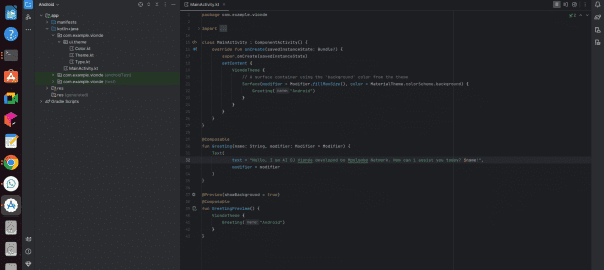Sat, Dec 2 2023 /Developers/ — Building an AI assistant using Flutter and Vertex AI involves creating a mobile app that interacts with a backend AI service. The mobile app can be developed using Flutter, a cross-platform UI toolkit for creating native mobile apps with a single codebase. Vertex AI, Google’s unified AI platform, can be used to build, deploy, and manage the backend AI service.
Here’s a general overview of the process:
-
Create a Vertex AI project: Set up a Vertex AI project in the Google Cloud Platform (GCP) console. This will be the central hub for managing your AI resources.
-
Develop the AI service: Use Vertex AI to create and train an AI model for your desired task, such as natural language processing (NLP) or image recognition. This model will be deployed as a backend service.
-
Create a Flutter app: Develop a mobile app using Flutter that will serve as the user interface for your AI assistant. The app will communicate with the backend AI service using HTTP requests.
-
Integrate Flutter app with Vertex AI: Implement the communication between the Flutter app and the Vertex AI backend service. Use the appropriate API libraries to send and receive AI processing requests.
-
Deploy and test the AI assistant: Deploy the Flutter app to your chosen mobile platforms (Android and iOS) and test its functionality with the integrated AI backend.
Here’s a more detailed breakdown of each step:
1. Create a Vertex AI project:
a. Go to the GCP Console and create a new project if you don’t already have one.
b. Enable the Vertex AI API for your project.
c. Create a Vertex AI region to host your AI resources.
2. Develop the AI service:
a. Choose the appropriate AI task for your assistant, such as text classification, sentiment analysis, or image recognition.
b. Select the relevant AI algorithm and prepare your training data.
c. Use Vertex AI’s AutoML capabilities or manual training to create your AI model.
d. Evaluate the model’s performance and refine it if necessary.
3. Create a Flutter app:
a. Set up a Flutter project using the Flutter SDK.
b. Design the user interface (UI) for your AI assistant app.
c. Implement the app’s functionality, including user input handling and display.
4. Integrate Flutter app with Vertex AI:
a. Install the necessary HTTP libraries in your Flutter project.
b. Create a function in your Flutter app to send AI processing requests to the backend service.
c. Use the Vertex AI API libraries to construct the request payload and handle the response.
5. Deploy and test the AI assistant:
a. Deploy the Flutter app to your chosen mobile platforms (Android and iOS).
b. Test the app’s functionality by interacting with the AI assistant and verifying its responses.
c. Refine the app and AI model based on testing results.

